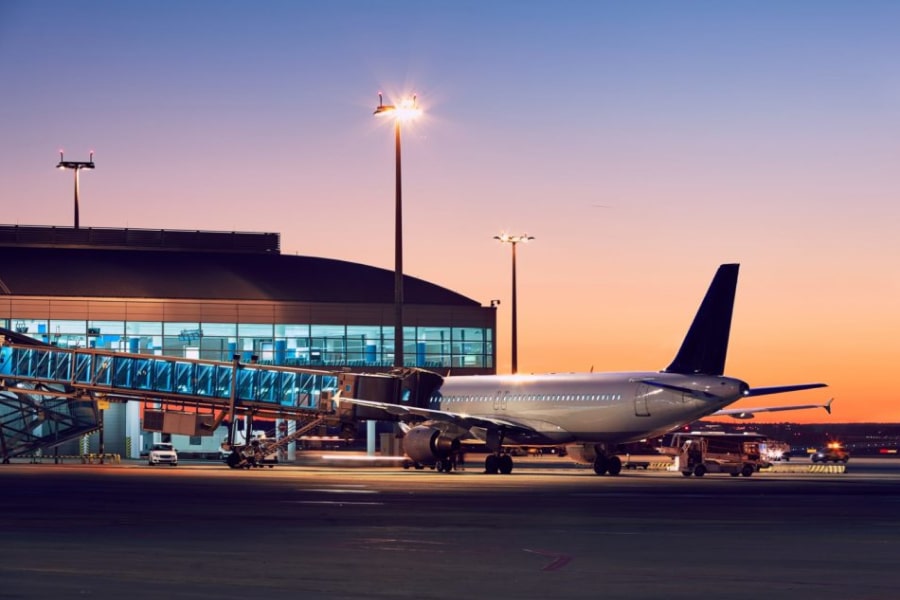Grounding of aircraft will be the biggest challenge in reviving aviation industry in 2021
Pran Dasan, Director, Commercial Operations South East Asia, flydubai, opines that if new variants of COVID-19 keep emerging there will be a further tightening of regulations by states which will dampen the appetite for leisure travel further. But he opines that the biggest driver of domestic aviation sector will be how soon the vaccine is introduced and how many people manage to get inoculated.

source: https://bit.ly/3bkzpKc
IBT: Will the emergence of the new variants of the COVID-19 virus act as a deterrent for domestic tourism & hence the Indian aviation industry? If not, what will be the drivers of domestic travel?
Pran Dasan: Firstly, let’s understand the composition of domestic travel. Approximately 65% of travel is for work/business. This segment will be driven by corporate policies which are still restricting air travel to the barest minimum. Work from home & salary cuts will have a domino effect on leisure travel, which under normal circumstances is about 20% of the domestic segment.
Secondly, regulations from state to state keep changing rapidly based on the trend of new infections and fatalities not only in the state but also outside. So if new variants of COVID-19 keep emerging there will be a further tightening of regulations by states which will dampen the appetite for leisure travel further.
The biggest driver of domestic travel will be how soon the vaccine is introduced and how many people manage to get inoculated. Bearing in mind that the aged, those with co-morbidities, health workers etc. are going to be the first to be targeted, we may safely assume that by the time the largest chunks of travellers – up to 50 years old – get the vaccine, it will probably be a year if not more. The vaccine will be a major confidence booster.
IBT: What can be done to boost traveller confidence & spur domestic travel in the country?
Pran Dasan: To re-open state borders without quarantine and return domestic air travel to pre-COVID levels, state governments need to be confident that they are effectively mitigating the risk of bringing in COVID-19 from other states. This means having accurate information on passengers’ COVID-19 health status. Informing air travellers on what tests, vaccines and other measures they require prior to travelling, details on where they can get tested and giving them the ability to share their tests and vaccination results in a verifiable, safe and privacy-protecting manner is the key to giving state governments the confidence to open borders. The Ministry of Civil Aviation has a major role to play as the nodal Ministry in this regard.
The main priority is to get people travelling again safely. In the immediate term that means establishing confidence in governments that systematic pre-departure COVID-19 testing can work as a replacement for quarantine requirements. And that will eventually develop into a vaccine program.
IBT: What international travel trends do you expect in 2021 – more travel bubbles/ more international travel curbs? What impact will they have on the revenues of the Indian aviation sector?
Pran Dasan: Till the wide-spread availability of vaccines, international travel will continue to be hamstrung by the effects of COVID. India will enter into more air bubble arrangements with different countries. Bearing in mind that Indians constitute the world’s largest expatriate community, there is an urgent need to ensure that air bubble or otherwise Indian expatriates are able to come in from or return to their countries of residence without hindrance be it due to connectivity issues or airfares.
Revenue-wise, brace for another difficult year. 2021 will be another loss-making year for Indian aviation – much like the rest of the world. However it is expected that the quantum of losses will be significantly lower – 60-70% than in 2020. As per IATA, performance factors in 2021 will show improvements in 2020; and the second half of 2021 is expected to see improvements after a difficult 2021 first half. Aggressive cost-cutting is expected to combine with increased demand during 2021 (due to the anticipated re-opening of borders either with testing and/or the enhanced availability of a vaccine). While IATA expects the industry turn cash-positive in the fourth quarter of 2021, this may be delayed by one or two quarters in India to the first half of 2022.
IBT: What impact will the rising crude prices have for the Indian aviation sector? How can the government come to the rescue of the domestic aviation industry?
Pran Dasan: There is an urgent need to truly recognize the Air Transport Industry for what it really is – an enabler. It is the cornerstone for every economic activity and one of the main drivers of globalization. So it is extremely important to recognize this and have measures to support the country’s air transport industry in its post-pandemic recovery with the same importance as the government would say the manufacturing industry.
It starts with the taxation of aviation fuel. In India, the proportion of fuel costs to overall operating costs average between 35-40%. These levels are much higher than anywhere else on the planet. A start could be made by removing excise duty on fuel and standardizing sales taxes of different states to a common level. ATF needs to be brought under the ambit of GST at the soonest as this will clear all ambiguities and lay the foundation for a much needed structural reform in this sector.
I also do hope that the Government of India would ensure that a number of waivers and sops provided to airports during this time would be passed onto airlines. Having a mechanism to ensure this will ensure that steps were taken by the Government filter down to all levels of the aviation industry and not just to airports alone. For starters, reduced airport charges for a certain period of time would be a welcome step to help airlines recover faster.
IBT: What is the overall demand and growth outlook of the industry for 2021 and why?
Pran Dasan: The biggest challenge will be grounded aircraft as not all routes will be restarted – especially international. These will mean continued payouts on unavoidable costs like leases, parking charges and maintenance (albeit reduced) without corresponding revenue earnings. This could be worsened if fuel prices spiked for some reason or the INR slumped beyond 75 to the US Dollar.

Pran Dasan is the Director, Commercial Operations Southeast Asia, flydubai. He has a rich experience of over 30 years in the aviation industry that includes long stints with Lufthansa and Kuwait Airways in leadership positions in the Indian Subcontinent. He is also a member of the Aeronautical Society of India. He holds a MSc degree in Air Transport Management from City University, London.













Absolutely accurate analysis of prevailing and anticipated conditions facing aviation industry / air travel.
Absolutely accurate analysis of prevailing and anticipated conditions affecting aviation industry / air travel.